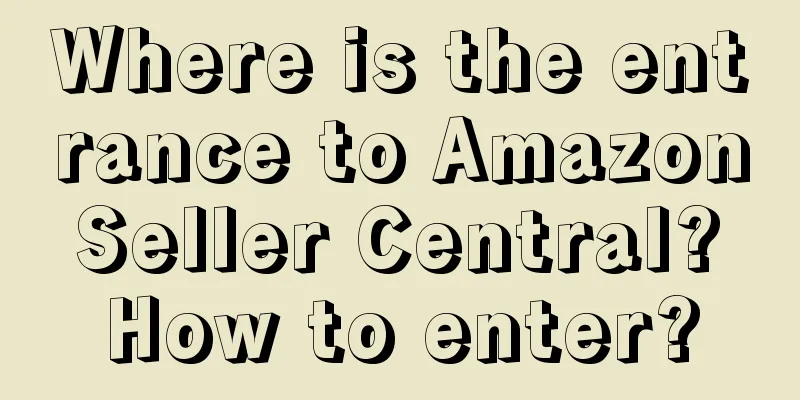Brand No. 1: Vacancy Competition Series 013

Four elements of competition for vacancies How to find your own competitive space requires four-dimensional thinking: point, line, surface, and body. (zoom in) abstraction and (zoom out) focus, see the direction and trend of the entire category from a high level, that is, the direction of the battle; from a deep level, focus on single points, single products, structures, and series, actively differentiate, find competitive spaces - points, lines, surfaces, and bodies, and achieve victory in the space. 1. Market ConcentrationIndustry concentration, also known as market concentration, refers to the total market share of the largest companies and brands in an industry. Industry concentration is a measurement indicator of the concentration of the market structure of the entire industry, outlining the basic outline of the market structure. According to the degree of concentration, the market structure can be divided into three types: free competition in scattered markets, homogeneous competition in block markets, and differentiated competition in cluster markets. That is: free competition, homogeneous competition, and differentiated competition. Free competition: In the early stage of market development and rapid growth, there is no market leader, and the main focus of participants is on incremental competition to seize users, and the market concentration is low. Competitive strategy: cost leadership in the supply chain, extreme cost-effectiveness in products, and expansion in channels. Whoever can make usable products in the shortest time and expand online and offline channels as quickly as possible will be able to occupy the market faster. The competition at this stage is a product competition. Homogeneous competition: A few manufacturers seized the category dividend before the market "hardened" and achieved profitability through online and offline channel construction based on the user scale obtained in the early stage. At this stage, excellent companies seized the dividend to form a phased first-mover advantage, while product innovation also reached a bottleneck stage, and the market inevitably entered the stage of homogeneous competition. 2. Industry price rangeEvery industry has its own unique price range, which is formed by the competition between consumers and brand companies. Through the industry price range, we can see the overall brand price ecology of the industry and find market gaps. That is, the market within the price range where brand competition is not fierce and there are opportunities to make money, and find the possibility of entering at high prices, low prices, and price gaps. 3. Category differentiation and characteristicsWhat is a category? Category is the classification, categorization, storage, and naming of product-related information by consumers. The value of categorization, storage, and naming lies in business. A name is a classification, and a classification represents a consumer demand. Categorization, storage, and naming directly affect consumers' purchasing choices. Why the category is behind the brand. Here are 3 basic principles: (1) Consumers think in terms of categories and express themselves in terms of brands; (2) The basic unit of memory is the category unit; (3) Basic Characteristics of the Mind 01. Consumers think in terms of categories and express themselves in terms of brands This is the ultimate and initial value. To be precise, there are two situations: when there is no brand, consumers express their needs with categories (give me a glass of water); when there is a brand, consumers express their needs with brands (give me a bottle of Nongfu). The insight into demand lies in the daily, colloquial expression of consumers. The insight into the daily expression of consumers' needs is the source code of the marketing foundation. This source code determines how you understand marketing and how you do marketing - marketing starts with people and ends with demand. 02. The basic unit of memory is category You can think of consumers' memory of brands as small drawers. Different types of brands will be placed in different small drawers, and the classification labels of the small drawers are categories. A small drawer (category) can only hold (remember) 7-9 brands. Memory is based on categories, and the upper limit is 7-9 brands. If there are more, it is difficult to remember. The most important thing is to be the first or second. There is no point in ranking the last seven. 03. 6 basic characteristics of the mind These six basic characteristics are the core of understanding the consumer mind. (1) Rejection of change; (2) Limited capacity; (3) Dislike of chaos; (4) Rejection of similarities and acceptance of differences; (5) Lack of security; (6) Prioritization of preferences. These correspond to the six basic principles of our branding: (1) Conform to cognition; (2) Be the best; (3) Occupy the brand with one word; (4) Be different; (5) No credibility, no foundation; (6) Preconceived ideas. A deep understanding of categories is the basis for competitive differentiation; Category is the colloquial expression of consumers, matching and expressing needs; The value of branding lies in the fact that brand = category. The faster this equal sign is drawn, the more valuable it is. The categories are small and beautiful, and the products are narrow and deep. The way for consumer goods to break into the industry track, the big and comprehensive approach is no longer suitable for the new business 10 years. The real challenge of the new business 10 years is not on the production side or the supply side, but on the cognitive side and the insight side - finding a competitive position. Because the choice of a sub-category for a brand to enter the market has largely predicted the result. Category is the matrix: consumers use categories to match their demands, use categories to express their demands, and use brands to choose products. Category segmentation: It is the crudest and most direct way to express differentiation. For example, companies can classify wooden doors into solid wooden doors, composite wooden doors, and cork wooden doors. They can classify them according to the different materials used. But before Tata made silent wooden doors, there was no classification that could be called silent wooden doors based on the material. This is the difference between the user perspective and the organizational perspective, and between internal thinking and external thinking. And this different thinking, the transformation of perspectives, and the ability to see will become the key to brands winning the market in the next 10 years - the insight into category differentiation and the occupation of competitive vacancies. 4. Final JudgmentThe market is huge and everyone can live well. Just be yourself, don't worry about your opponents This may be the most poisonous chicken soup in the business world. The first sentence ignores the industry cycle and changes; the second sentence poisons oneself and ignores competition. In the New Testament, there is such a story: A king of ancient Rome was going on a long journey. He called three servants to him and gave each of them a silver ingot... From him who had less, even what he had was taken away; from him who had more, more was given, so that he could have more. The Matthew effect in real business competition is also like this. No matter how big the market is expected to be in the future, the vast majority of the market share can only be enjoyed by the top three companies, and it is impossible for all companies to share equally. The result is a 7:2:1 industry structure. Because the real competition takes place in the minds of consumers. In a category, consumers can remember no more than 7 brands. Usually there are 3-4. For example, there are no more than 7 apps of the same type installed in a mobile phone, and even 3-4 at most. Where is the competitive space that belongs to you? The market is huge, but the consumer's mental capacity is limited. The time left for new consumer brands is not in the physical space, but in the consumer's mental space. Once the mental window is occupied, the competitive space will no longer exist. The big brother occupies the leading position in the market, makes the whole product line, takes the whole market, and fights a defensive war; The second child occupies the primary position, seizes the competitive space, and fights the offensive battle; The third and fourth largest companies occupy the regional market, fight to support the enemy, and look for opportunities for flanking attacks; Companies in other industries fight guerrilla warfare, where survival is the only goal; ——The strong eat meat, the weak don’t even think about drinking soup From the perspective of industry, there are industry market price segments; from the perspective of categories, there are category differentiation and characteristics; from the perspective of competition, there is competition ranking; from the perspective of consumer cognition, there are needs and minds; from the perspective of the enterprise itself, there are enterprise endowments and brand assets. Sun Tzu's Art of War: Knowing the place of war and the day of war, you can fight a thousand miles away - knowing where to start a war and choosing where to start a war are more important than the act of starting a war. Through market concentration, industry price range, category and differentiation, and final judgment, enterprises must eventually find their own advantageous (profit, value) position - competitive vacancy - the brave will win when two meet in a narrow road, and victory lies not in bravery but in the narrow road. That is: the advantages brought by the competition for vacancy. |
<<: Who made money on Xiaohongshu by being "abstract"?
>>: Data analysis method of experts 4: benchmark analysis
Recommend
What currency is used in Shopee Taiwan? How is pricing determined?
As a cross-border e-commerce platform, Shopee has ...
Is Wish children's clothing easy to sell? How can I make it sell well?
Every family is willing to spend money on their ch...
How to get “her” to pay?
This article provides a comprehensive and in-depth...
What are the specific delivery models of Amazon CPC advertising?
If you open a store on the Amazon platform, you ne...
How can Chinese sellers join gmarket? What are the advantages?
Now many friends are going to open stores, so you ...
Southeast Asia's live broadcast rooms are filled with girls opening blind boxes
From Ho Chi Minh City in Vietnam to temples in Tha...
Buying for 1,000 yuan and waiting for 800,000 yuan to be recovered, the old lady was brainwashed, and the anchor admitted to cheating - Tracking the recycling jewelry live broadcast
Buying for 1,000 yuan and waiting for 800,000 yuan...
What are the main payment methods for eBay? Can I receive payment through PayPal?
For new and inexperienced users, eBay's paymen...
The paid model failed, ByteDance launched two free online literature apps
Why did ByteDance launch two free online writing a...
How can B2B companies build good IP?
There are great differences between to B enterpris...
How to choose a customer acquisition channel? Share a real case study of Zhiyin and Xiaohongshu
This article shares a case of how a startup brand ...
These 24 brand viewpoints will teach you how to build a brand from scratch
24 brand building perspectives, from insights into...
How much does it cost to build an independent website? How much does it cost?
An independent website is an independent website w...
Can a novice seller on Amazon sell everything?
As the world's largest e-commerce platform, Am...
Taobao's series of big moves are sending important signals
This article discusses a series of strategic chang...









